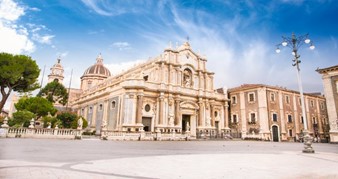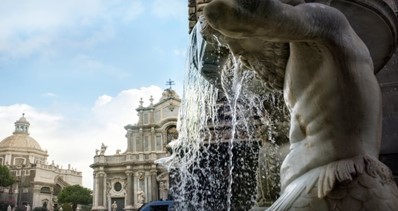
Sicilian Baroque: Architecture to Astound
Nestled in the Mediterranean Sea, the island of Sicily is a popular Italian holiday destination. With its sun-soaked shores and thriving culture, visitors have plenty to see. However, those looking to make the most of their trip to Sicily should definitely consider visiting the more man-made structures of the island.
Sicily is famous for its Sicilian Baroque architecture. This is a particular construction style, which saw substantial popularity in the 17th and 18th centuries. In particular, Sicilian Baroque architecture amalgamates a number of influences, including Roman and Gothic styles. This intriguing blend has given birth to the Sicilian Baroque architecture that flourished after the Sicilian earthquake of 1693.

Because of the earthquake, extensive rebuilding was required across Sicily and the island underwent a drastic visual update. The Sicilian Baroque style is identified by its decorative aesthetics, featuring detailed sculptures and columns. For several years, Sicilian Baroque architecture continued as the dominant architectural style on the island due to its unique look. Many churches and monasteries adopted the Sicilian Baroque appearance and even many residential buildings.
Because of this flourishing architectural style, Sicily is filled with extravagant examples of Sicilian Baroque buildings. With its mediaeval, Roman and Gothic influence, Sicilian Baroque architecture is sure to astound with its attention to detail and striking visual design.
If you are planning to explore Sicilian Baroque on a Sicily package holiday, here are some of our favourite attractions to discover.
Cathedral of Syracuse:
The Cathedral of Syracuse, built in the 7th century, stands as a fine example of Sicilian Baroque. It’s so cherished that in 2005 the Cathedral was added to the list of UNESCO World Heritage Sites. This exemplary implementation of Sicilian Baroque architecture also stands as an incredible human achievement, which has left a distinct impression on the world. The Cathedral of Syracuse is also home to incredibly detailed mosaics and statues, each demonstrating exceptional craftsmanship.
Basilica della Collegiata (Basilica Collegiata):
Located in Catania, Sicily, the Basilica della Collegiata is another distinct example of Sicilian Baroque architecture. Rebuilt after the 1693 earthquake, the extravagant appearance of Basilica della Collegiata is noted for its remarkable history and dramatic decor. No trip to Sicily is complete without a visit to Basilica della Collegiata.
Noto Cathedral:
Travellers to Noto, Sicily, frequently make the pilgrimage to the Roman Catholic Cathedral, which resides at its heart. The imposing Noto Cathedral was another important structure rebuilt after the 1693 earthquake and is a notable inclusion to the UNESCO World Heritage Site list. With its symmetrical design and attention to detail, the golden walls of Noto Cathedral attract visitors from across the world.
Cathedral of San Giorgio (St George’s Cathedral):
Another UNESCO World Heritage Site makes our list and this time it’s the Cathedral of San Giorgio. This must-see Cathedral lies in the province of Ragusa, Sicily. As another exemplary example of Sicilian Baroque, this distinguished structure towers above the city of Modica. Those who approach this monument will immediately notice the characteristics of Sicilian Baroque, which have made it into such a beloved style. It’s evident that each corner of the Cathedral of San Giorgio was created with unprecedented attention to detail as each corner of the structure is precisely designed.
If any of these historical monuments have captured your interest and you’re considering a trip to Sicily, our experts are waiting to hear from you. We offer customisable Sicily package holidays to suit any requirements. If you would like a quote for a Sicily package holiday, then please fill in our online form or call us on 01223 637331.
Search Keywords
Enter keywords below to perform a search within the events to find more relevant posts